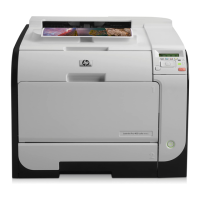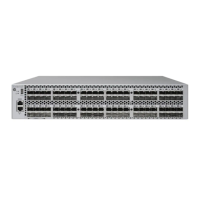file-mode-backup-option
specifies one or more conditions for the file-mode BACKUP operation (see File-Mode BACKUP
Options (page 46)).
VOLUMEMODE
instructs BACKUP to run in volume mode.
$volume | $ldev
specifies the disk volume name or logical device number for a volume-mode backup.
-P-M
specifies the primary or mirror half of a volume pair to be backed up. If neither one is specified,
the primary and mirror halves must be valid and matching, and the logical pair is backed up.
volume-mode-backup-option
specifies one or more conditions for the BACKUP operation (see Volume-Mode BACKUP Options
(page 47)).
File Sets, File-Set Lists, and Qualified File-Set Lists
You can specify precisely which files to back up in one of these formats:
A set of files on a local or remote nodeFileset
One or more file setsFile-set list
A file set list that can contain conditions to include or exclude the backup of certain
files
Qualified file-set list
NOTE: This subsection applies to the syntax for both BACKUP and RESTORE.
Wild-Card Characters in a File Set
A file set can contain these wild-card characters in the volume, subvolume, and file-id fields:
Matches from 0 through 8 characters in the position where it appears* (asterisk)
Matches one character in the position where it appears? (question mark)
For example, the volume name $SB?? matches all four character volume names that begin with
SB. The file name *CH? matches all file names that end with CH followed by any single character.
Fileset Syntax
fileset
is a set of files to back up from the current or another node (system) specified as:
[[[ \node.]$volume.]subvolume.]file-id
When you back up files from a node different from the one on which you are running BACKUP,
the operation is known as a remote back up.
Files in a fileset are processed in alphabetical order (by volume) of their fully qualified
Guardian names. A fileset can contain wild-card characters. If you omit node, volume,
or subvolume, BACKUP assumes the current volume and subvolume.
For example, this fileset specifies all files ending with X on the PAYROLL subvolume of the
current volume:
PAYROLL.*X
If you specify volume, you must also specify subvolume. Also, if you omit subvolume, you
must also omit node and volume.
42 BACKUP

